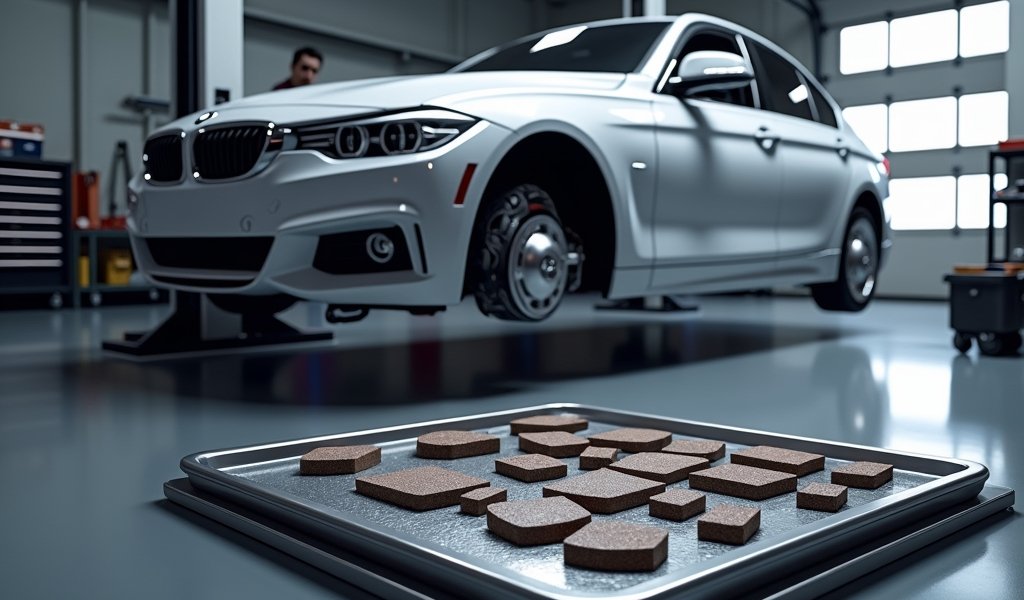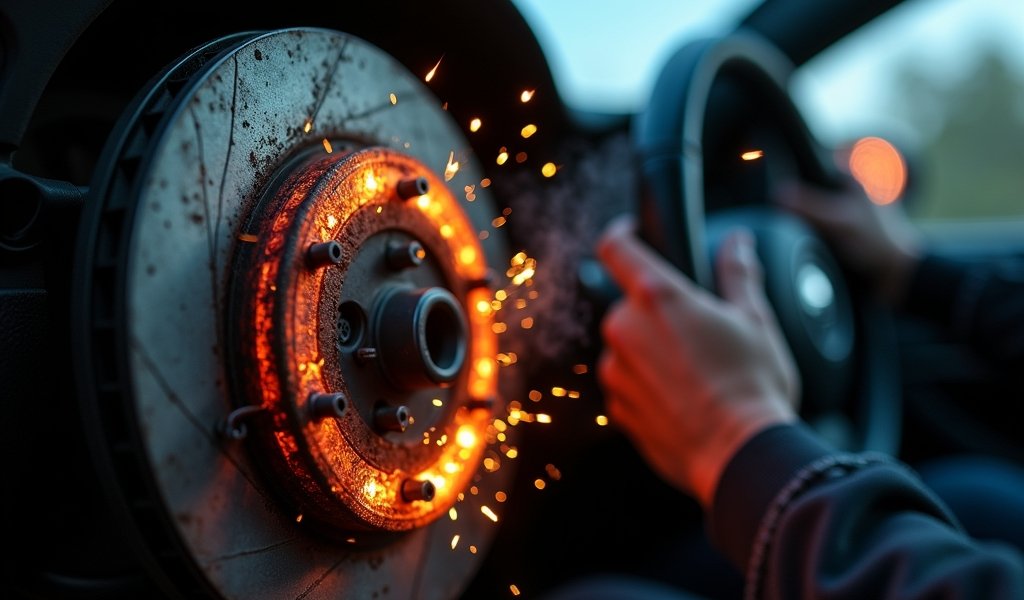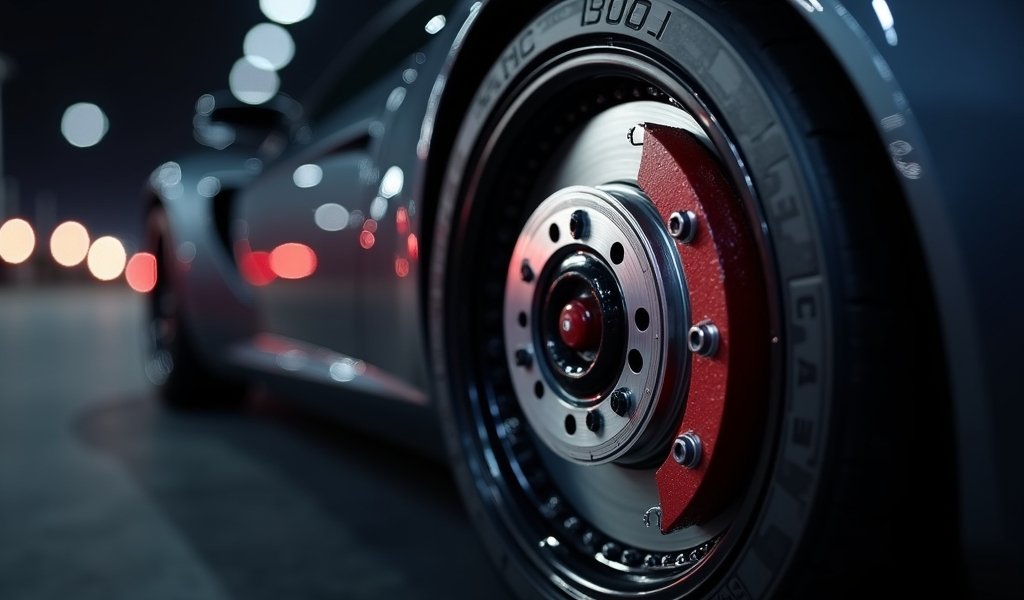Overview
This guide explains how to select the right brake pad compound based on five key factors: matching your driving style, considering vehicle type, understanding environmental conditions, balancing performance with comfort, and respecting manufacturer recommendations. The article details the characteristics of organic, semi-metallic, ceramic, and fully metallic brake pad compounds, highlighting how each type offers different benefits for safety, durability, noise levels, and stopping power.
Table of Contents
- Understanding Brake Pad Compound Selection
- Why Brake Pad Compound Selection Matters
- Common Types of Brake Pad Compounds
- Tip 1: Match Your Driving Style
- Tip 2: Consider Your Vehicle Type
- Tip 3: Understand Environmental Factors
- Tip 4: Balance Performance and Comfort
- Tip 5: Don’t Overlook Manufacturer Recommendations
- Conclusion
- Frequently Asked Questions
Understanding Brake Pad Compound Selection
When it comes to your vehicle’s safety, few components are as critical as your brake pads. As a mechanic with over 15 years in the shop, I’ve seen firsthand how brake pad compound selection can make or break your driving experience—quite literally. The right compound ensures your vehicle stops when you need it to, while the wrong choice might leave you with squealing noises, premature wear, or worse, compromised stopping power.
Selecting the optimal brake pad compound isn’t just about picking the most expensive option or whatever your buddy recommends. It’s about understanding the unique combination of your driving habits, vehicle specifications, and the conditions you typically drive in. Let’s dive into the world of brake pad compounds, and I’ll share some hard-earned wisdom that’ll help you make an informed choice for your vehicle.
Think of brake pad compounds as different types of shoes—you wouldn’t wear flip-flops to go hiking, just like you wouldn’t want racing pads for your family minivan. This guide will walk you through everything you need to know about brake pad compound selection without the confusing jargon or unnecessary fluff.
Why Brake Pad Compound Selection Matters
Imagine pressing your brake pedal during an emergency only to find your vehicle doesn’t stop as quickly as it should. Terrifying, right? This scenario highlights exactly why brake pad compound selection deserves your attention. Your brake pads are the unsung heroes of your vehicle’s safety system, converting kinetic energy into heat through friction to bring your vehicle to a stop.
Different compounds handle this heat dissipation differently. Some compounds are designed for everyday driving, offering a good balance of durability and performance. Others are engineered for high-performance applications where rapid heat buildup occurs. Using the wrong compound can lead to brake fade—a dangerous condition where your brakes temporarily lose stopping power due to overheating.
Beyond safety, proper brake pad selection affects your wallet too. The right compound will last longer, saving you from frequent replacements. It also protects other expensive components like rotors from premature wear. Plus, who wants to deal with that embarrassing brake squeal at every stoplight? The right compound can eliminate those annoying noises that make everyone turn and stare.
The environmental impact shouldn’t be overlooked either. Some compounds release more brake dust and potentially harmful particles than others. If you’re environmentally conscious, this might factor into your decision-making process alongside performance considerations.

Common Types of Brake Pad Compounds
Before diving into our tips, let’s establish some groundwork by understanding the main types of brake pad compounds available today. Each has distinct characteristics that make them suitable for specific applications:
Organic Compounds
Organic brake pads (sometimes called “non-asbestos organic” or NAO) are composed of materials like rubber, glass, resin, and Kevlar bound together with high-temperature resins. These were developed to replace the harmful asbestos pads of yesteryear.
These pads are generally the quietest and produce less dust than other options. They’re gentle on rotors and provide adequate stopping power for normal driving conditions. The downside? They wear faster, especially in demanding conditions, and can suffer from brake fade when they get too hot. They’re typically the standard option on many economy and mid-range vehicles.
Semi-Metallic Compounds
Semi-metallic pads contain 30-65% metals like steel, copper, and iron mixed with friction modifiers and fillers. These workhorses offer excellent heat transfer and durability, making them suitable for a wide range of conditions.
The metal content helps dissipate heat more effectively, reducing the risk of brake fade during prolonged or aggressive braking. They last longer than organic pads but tend to be noisier and may wear rotors more quickly. These are common in trucks, SUVs, and vehicles that handle heavier loads or towing duties.
Ceramic Compounds
Developed in the 1980s, ceramic brake pads contain ceramic fibers, bonding agents, and sometimes small amounts of metal. They’ve become increasingly popular for good reason.
These pads offer a fantastic balance of performance characteristics: they’re quiet, produce minimal dust (and what dust they do produce is light-colored and less visible), offer consistent performance across a wide temperature range, and are generally kind to rotors. The tradeoff comes in the form of higher cost and sometimes slightly reduced initial bite compared to metallic options. Many modern passenger vehicles come equipped with ceramic pads from the factory.
Fully Metallic Compounds
These performance-oriented pads contain high percentages of metal, often copper or steel. Found primarily in racing applications, these pads deliver exceptional stopping power and heat management.
However, they’re incredibly noisy, produce significant dust, and wear rotors quickly. Unless you’re hitting the track regularly, these are typically overkill for street use. According to research published by the Society of Automotive Engineers, fully metallic pads can withstand temperatures up to 1500°F, far beyond what most daily driving requires.
Tip 1: Match Your Driving Style
The most important factor in brake pad compound selection is being honest about your driving style. Are you a relaxed cruiser who rarely pushes the vehicle hard? Or do you enjoy spirited drives through winding roads? Your answer should guide your choice.
For everyday commuters who drive moderately, organic or ceramic compounds often provide the best overall experience. They offer smooth, quiet operation with sufficient stopping power for normal driving conditions. Plus, the reduced dust from ceramic pads means your wheels stay cleaner longer—a small but satisfying benefit.
If you’re more aggressive with your driving or frequently tackle mountain roads with lots of descents, semi-metallic compounds might serve you better. Their improved heat management prevents the brake fade that could occur with organic pads under these conditions. The trade-off in noise and dust is worth the performance benefit in these scenarios.
For those who occasionally take their street car to track days, consider having two sets of brake pads: one for daily driving and a higher-performance compound for track use. This approach gives you the best of both worlds without compromise. Many enthusiasts follow this path to avoid the drawbacks of using high-performance pads for regular commuting.
Remember that squeaky brakes often result from using a compound that doesn’t match your driving style. Performance-oriented pads used for gentle driving may never reach optimal operating temperatures, leading to noise and uneven wear patterns.
Tip 2: Consider Your Vehicle Type
Different vehicles have different braking needs, and the brake pad compound should be selected accordingly. Your 2-ton SUV has very different stopping requirements than a lightweight compact car.
Heavier vehicles like trucks, SUVs, and luxury sedans benefit from semi-metallic or ceramic compounds that can handle the additional heat generated when stopping greater mass. The enhanced durability of these compounds also means fewer replacements, which is important considering the often higher cost of parts for larger vehicles.
Lightweight vehicles can often work well with organic compounds for normal driving, as their reduced mass doesn’t generate as much heat during braking. However, if you’ve modified your vehicle for performance or frequently carry heavy loads, you’ll want to upgrade your brake pad compound accordingly.
Electric and hybrid vehicles present unique considerations. Their regenerative braking systems mean the physical brakes are used less frequently, but when they are engaged (particularly in emergency situations), they need to perform optimally despite being relatively cold. Ceramic compounds often work well in these applications due to their consistent performance across temperature ranges.
If your vehicle is equipped with an ABS brake system, which most modern cars are, all major brake pad compounds will work effectively. However, extreme performance compounds might alter the feel of ABS activation, something to consider if you’re looking at specialized options.
Vintage or classic car owners face different challenges. Original equipment-style organic compounds might be preferred to maintain authenticity, but modern formulations can offer improved performance while maintaining the correct feel. Specialty manufacturers offer compounds specifically designed for classic vehicles that balance period-correct performance with modern safety standards.

Tip 3: Understand Environmental Factors
Your local climate and typical driving environment play a significant role in brake pad compound selection. Environmental factors affect not just pad wear but also overall braking performance.
In regions with frequent rain or snow, consider how different compounds perform when wet. Some metallic compounds can experience slightly reduced initial bite when wet, while certain ceramic formulations maintain more consistent performance. A study by the National Highway Traffic Safety Administration found that stopping distances can increase by up to 35% in wet conditions with improperly selected brake compounds.
Temperature extremes also matter. In very cold climates, some compounds require more warm-up time to reach optimal performance. This might mean the first few stops of your morning commute have reduced braking power. Ceramic compounds generally offer more consistent performance across temperature ranges, which is beneficial in areas with dramatic temperature fluctuations.
If you live in a dusty environment or an area with frequent road salt application, consider the corrosion resistance of different pad backing plates. Premium pads often feature additional protective coatings to prevent rust and corrosion that could lead to noise or premature failure.
Urban drivers face different challenges than rural motorists. City driving involves frequent stops and starts, which can quickly wear down softer compounds like organics. The constant heating and cooling cycles can also lead to glazing—a condition where the pad surface becomes smooth and shiny, reducing friction. Semi-metallic or ceramic compounds generally handle these conditions better.
High-altitude driving creates unique braking demands. The thinner air at elevation means less aerodynamic drag to help slow your vehicle, putting more demand on your brakes during descents. If you frequently drive in mountainous regions, prioritize a compound with excellent heat management capabilities.
Tip 4: Balance Performance and Comfort
Finding the sweet spot between stopping power and everyday livability is crucial for most drivers. The most aggressive brake pads might deliver Formula 1-worthy stopping distances, but they could make your daily commute a noisy, dusty nightmare.
Noise considerations matter more than many people realize. While some enthusiasts wear brake squeal as a badge of honor, most drivers prefer quiet operation. Ceramic compounds generally offer the quietest performance, followed by organics. Semi-metallics tend to be the noisiest of the common options, though modern formulations have improved significantly.
Brake dust isn’t just an aesthetic concern—it can actually be corrosive to wheel finishes if left unattended. Ceramic compounds produce the least amount of visible dust, while metallic compounds typically produce the most. If you’ve invested in premium wheels, this factor might weigh more heavily in your decision.
Consider pedal feel as well. Some compounds provide a more progressive brake pedal feel, while others have a more immediate “bite.” This is largely subjective, but most daily drivers prefer a progressive feel that allows for more precise modulation in everyday traffic.
Be realistic about your needs. While it might be tempting to install the highest-performance pads available, they might require higher operating temperatures than you’ll ever reach in normal driving. This could actually result in worse stopping performance than a more moderate compound that works well within your typical temperature range.
For vehicles with dual purposes (like a daily driver that occasionally tows), consider a middle-ground compound that can handle both scenarios adequately, rather than excelling at one and performing poorly at the other. Modern ceramic-metallic hybrid formulations often strike this balance well.
Tip 5: Don’t Overlook Manufacturer Recommendations
While aftermarket options abound, there’s wisdom in at least considering what the engineers who designed your vehicle recommend. Manufacturer brake pad specifications are determined after extensive testing specific to your vehicle’s weight, brake system design, and intended use.
Original Equipment Manufacturer (OEM) pads are designed to meet a wide range of requirements, including performance standards, noise regulations, and durability targets. While they may not excel in any one area, they typically provide a well-rounded experience that satisfies most drivers’ needs.
That said, aftermarket options can offer legitimate improvements for specific requirements. Premium aftermarket brands invest heavily in research and development to create compounds that outperform OEM specifications in targeted areas. The key is understanding which improvements matter most to you.
Be cautious with budget brake pad options that promise performance matching premium brands at a fraction of the cost. These often use lower-quality materials that can wear prematurely or deliver inconsistent performance. When it comes to the component responsible for stopping your vehicle, the savings rarely justify the potential risks.
If you’ve modified your vehicle—whether with larger wheels, increased power, or reduced weight—the original brake pad compound might no longer be optimal. In these cases, working with a knowledgeable performance shop can help you select a compound that accounts for these changes.
When upgrading to an aftermarket compound, ensure it’s compatible with your existing rotors. Some high-performance pads require specific rotor materials or treatments to function properly. According to industry experts, modern environmental regulations have also impacted pad formulations, particularly regarding copper content, which may affect compatibility with older systems.
Conclusion
Brake pad compound selection doesn’t have to be overwhelming. By understanding your driving style, vehicle type, environmental factors, and finding the right balance between performance and comfort, you can make an informed decision that enhances both safety and driving enjoyment.
Remember that there’s rarely a perfect one-size-fits-all solution. Each compound type offers a different set of compromises, and the best choice is the one that aligns most closely with your specific needs and priorities. Sometimes, this means trying different options until you find your ideal match.
Whether you opt for the quiet, clean operation of ceramics, the cost-effectiveness and gentle nature of organics, or the robust stopping power of semi-metallics, proper installation and regular inspection remain essential. Even the perfect compound won’t perform properly if installed incorrectly or used beyond its service life.
As vehicle technology continues to evolve, so too do brake pad compounds. Stay informed about new developments, particularly if you drive a newer vehicle with advanced driver assistance systems that may interact with the braking system in complex ways.
Your brakes are your vehicle’s most important safety system. By investing the time to select the right compound and maintaining them properly, you’re not just enhancing performance—you’re investing in peace of mind for every journey you take.
Frequently Asked Questions
How often should I replace my brake pads?
Most brake pads should be replaced when they reach about 3-4mm of thickness. Depending on your driving style and pad compound, this typically occurs every 30,000-70,000 miles.
Are ceramic brake pads worth the extra cost?
For many drivers, ceramic pads justify their higher price through reduced noise, less dust, and consistent performance. They’re particularly valuable if you have premium wheels or prioritize a quiet driving experience.
Can I mix different brake pad compounds on the same vehicle?
It’s not recommended to use different compounds on the front and rear axles as this can create unbalanced braking. Always replace pads in complete axle sets for consistent performance.
Will upgrading to performance brake pads improve my stopping distance?
Performance pads can improve stopping distance when used within their optimal temperature range. However, for everyday driving at normal temperatures, the improvement may be minimal compared to high-quality standard pads.
How do I break in new brake pads properly?
Proper break-in typically involves a series of moderate stops from about 30-40 mph without coming to a complete stop, allowing the pads to cool between applications. Always follow the specific instructions provided with your pads for best results.


Pingback: Brake Caliper Piston Seal Kit: 5 Fixes - knowsyourcar.com
Pingback: Brake Fluid DOT Specification Requirements - knowsyourcar.com
Pingback: Brake Proportioning Valve Adjustment 101 - knowsyourcar.com
Pingback: Electronic Brake Force Distribution 101 - knowsyourcar.com